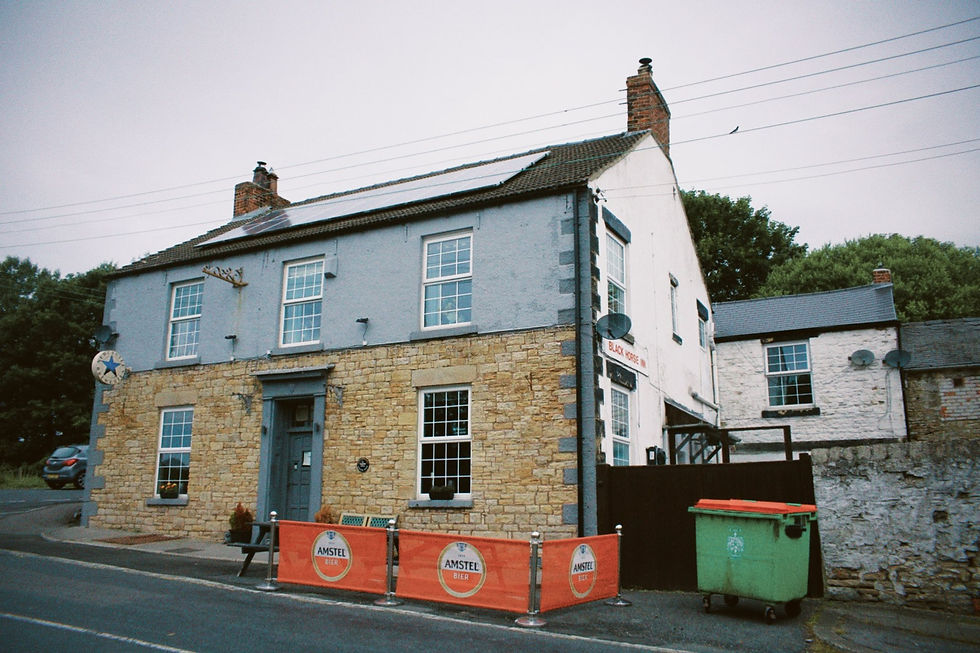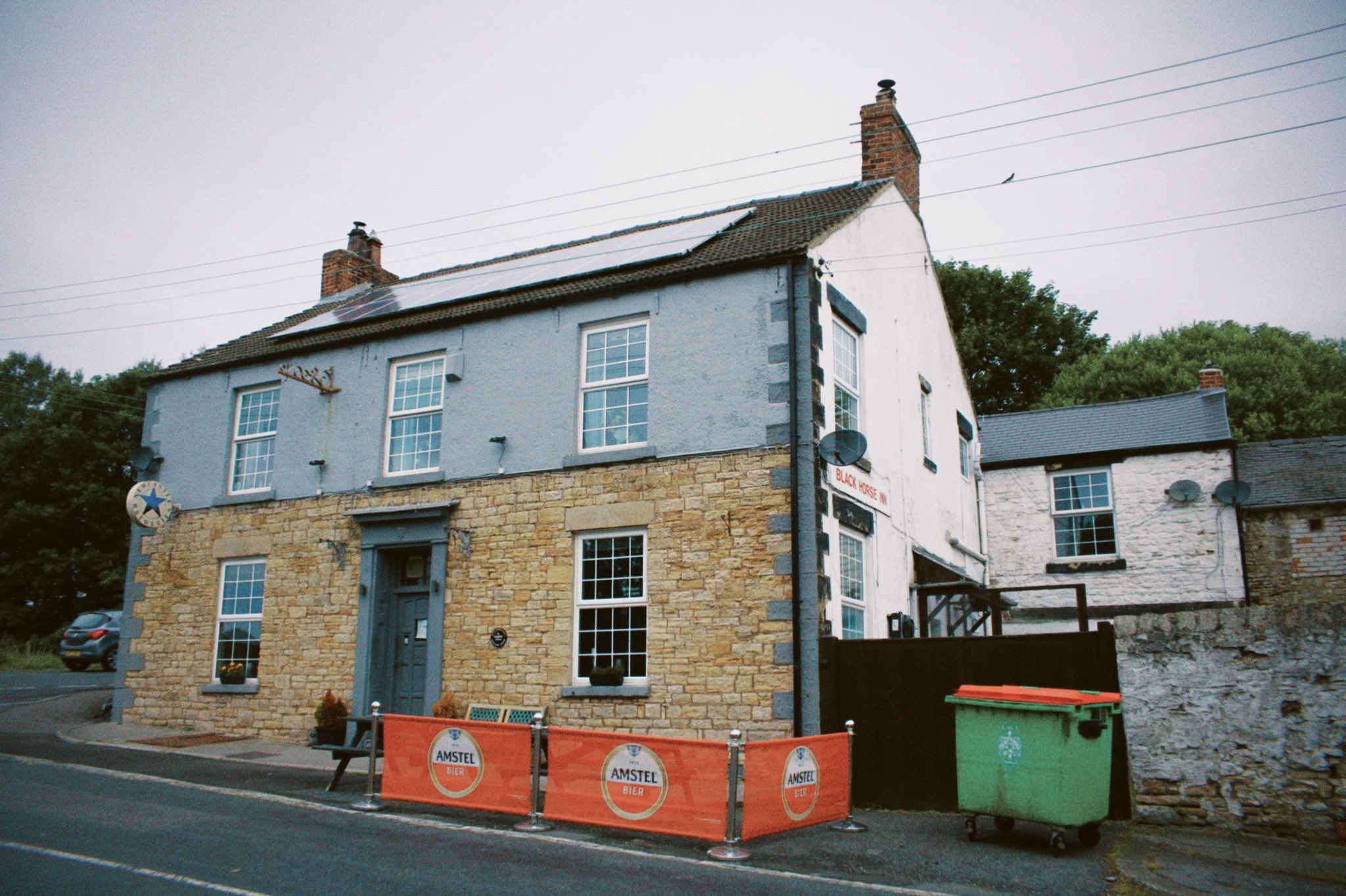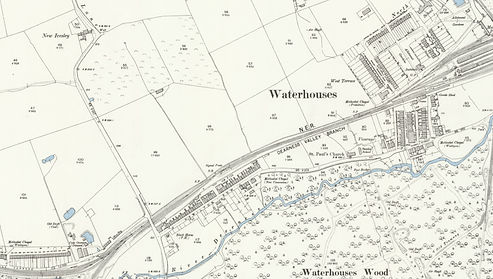
Waterhouses
Black Horse Inn, Waterhouses
Last Updated:
21 Jul 2025
Waterhouses
This is a
Pub
54.759403, -1.727426
Founded in
Current status is
Extant
Designer (if known):

Still in use as a pub
On the western edge of Waterhouses is a lovely old pub named the Black Horse Inn. It’s the first and only public house to ever be operating in the pit settlement.
You can see it’s the original building with the lesser rendered outbuildings at the rear - perhaps signifying use as a hotel and a coaching yard through the gates. It follows the template of the terrace which lines this whole lane though, all built in the 1860s. The village website states it was opened in the 1820s, which couldn’t be further from the truth and isn’t featured on 1850s maps. Sadly, such info has been replicated by the Chronicle also!
The first documentary reference we find of the pub is an incredibly sad one, with the inquest of a ten month old held here in 1879. The deputy coroner discovered the child had burnt to death after picking up a newspaper and accidentally ignited it on a nearby candle. Such visceral and heartbreaking stories really bring home how, despite being some 4 generations ago, anguish and empathy transcend the years which pass.
The piece does uncover the suspicion that this was a hotel, meaning it was very likely accommodating lodgers and visitors to the nearby collieries at Waterhouses and Hedleyhill. It also reveals one of the first landlords was actually a woman - Mrs Button.
In 1888 a quoits ground was opened by the publican Mr Samuel Coxon here, adding another channel of income with the betting and handicaps which were put on. Leek shows were also held by Samuel.
In the first decade of the 20th century the pub took a slip - with constant drunkenness permitted and threats to remove the licence. The landlady was fined numerous times after being caught by visiting police officers.
The pub has remained ever since - an enduring defiance of the pit village tavern.
Listing Description (if available)


Both the Ordnance Survey maps shown depict Waterhouses from the end of the 19th century through to the inter-war period. The village had reached its zenith about a decade or two prior with the operations of the colliery already in full swing. A great extent of the village stood on the northern side of the railway and pit, with much of its infrastructure like schools and institutes over the road from the colliery. These days there is no standing building left on this half, with only the football ground a real trace. There are however still kerb stones and minor visual traces as per information from Peter Laurence.
The 1930s map adds to the picture, with a web of drifts tangling round the village. A fire engine station was added next to the Wesleyan Church, alongside a more recognisable colliery recreation ground with a bowling green and tennis court. Only the football ground remains extant.
The Black Horse was an ideal spot, given its location on the Ivesley Lane and the proximity with the Hedleyhill workings. Folks working at either colliery will have called this their local.

We gain a good understanding of how the village was built up if we refer to the Ordnance Survey produced over the 1850s. Waterhouse Colliery, later "Waterhouses" given the proximity of both the Low and High Water Houses, sat near a series of small streams and the North Eastern Railway. Such allowed for a constant source of water alongside a logistical connection to the wider world. The only thing lacking was a population, which would come from folk migrating into the new built terraced housing.

The Black Horse Inn in June 2025, with its also original side buildings which likely posed as the rooms around the stabling yard.
